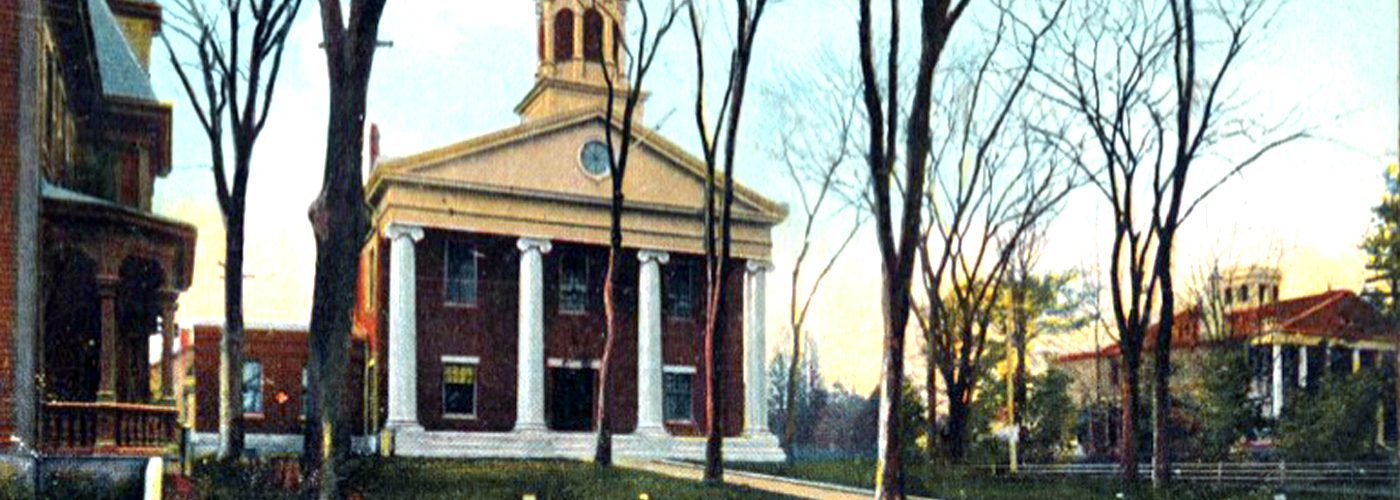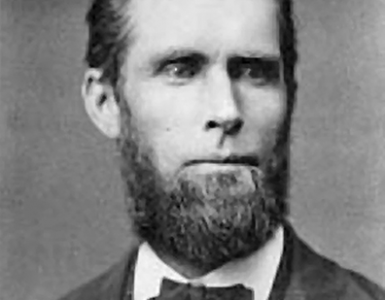by Annette Holba, PhD
First published in October/November, 2005, Volume 2, Issue 5, The Hatchet: Journal of Lizzie Borden Studies.
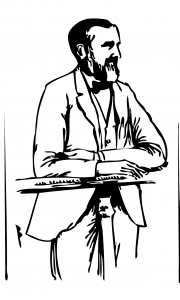
If one uses a contemporary lens in an analysis of the testimony of John V. Morse in the trial of Lizzie Borden one would conclude that the police and the prosecutor did not do a favorable, thorough, or effective job in their line of inquiry. When we critique the police, private detectives, and state personnel of the 19th Century with our 21st Century standards of investigation we discover that their work was not only flawed but also inadequate. In order to give the trial testimony of John V. Morse, or any other witness in the Borden case, its due we need to stand within the historical moment of the given narrative episode rather than to stand above it or outside of it, however difficult that may be. Instead of accepting Morse’s testimony as simply complete/incomplete or adequate/ inadequate, this essay uses historicity, or authenticity, in a forensic inquiry to allow us a fresh insight into Morse’s contribution to the Borden case. This alternative understanding invites interested parties to reconsider John V. Morse and his enigmatic trial testimony within its own historical context. In this way, the reader may be able to more accurately evaluate John Morse’s contribution to or contamination of, as the case may be, one of America’s greatest unsolved mysteries.
Historicity
Historicity is a “historically effected consciousness” (Gadamer, 341) that aids us in our apprehension of a given phenomenon or circumstance. To sit outside of a historical moment and allow prejudice or a contemporary mindset to determine interpretation would be to encourage a flawed understanding of a given event. Although bias is a natural and intrinsic part of any historical interpretation, recognizing one’s prejudices can help to limit their negative effects in our interpretive encounters. This does not mean, however, that we ought to ignore any fore-meaning that we may come to have through our experiences. Fore-meanings occupy a definite stage in our process of interpretation but their place is secondary to our historical consciousness. We should not forget our preconceptions but we should also acknowledge them while we strive to remain open to new meanings.
“Prejudice” means “a judgment that is rendered before all the elements that determine a situation have been finally examined” (Gadamer, 270). The Latin word for prejudice is praejudicium, which means to have an adverse effect, harm, or consequence. Having prejudgment does not guarantee a false interpretation; rather, it can have both negative and positive consequences. In this particular approach to the trial testimony of John V. Morse, I will, therefore, take care to acknowledge my own bias in the case while remaining open to finding new meaning in this rhetorical examination of his sworn responses.
The approach of this essay is through the privileging of historicity so that we do not close down potential meaning from emerging. John V. Morse is a very interesting character within the “emplotment” (Ricoeur, 31) of the Borden murders. If we limit our frame for comprehending the case or Morse’s potential role in the scenario to a strictly modern mindset, we would necessarily exclude things that might enlighten our understanding of the case. We would probably also make assumptions and draw conclusions that are not based on actual conditions. Approaching our consideration of John V. Morse through historicity will aid in our quest for a clearer understanding of his role in the narrative of the life and death of Andrew and Abby Borden.
Narrative
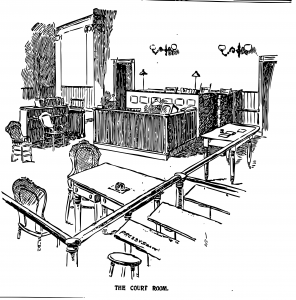
For the purpose of this essay, narrative “begins with a speech act that is tested by people and competing world views, then is fashioned into a story with main characters, a history, and a direction; a story becomes a narrative only when it is corporately agreed upon and no longer the product of an individual person” (Arnett and Arneson, 6-7). The narrative that enfolds this essay is the narrative of the life and death of Andrew Borden. Once his death became known in a public sense, Andrew Borden’s life became public. The characters of emplotment within Andrew’s narrative include Lizzie Borden, Emma Borden, Abby Borden, Bridget Sullivan, and John Morse, not to mention many others contained within his circle of life experience. In order for this rhetorical examination to proceed, understanding the rationality of a narrative is essential.
Humans are essentially rhetorical beings, according to Walter Fisher’s (1989) narrative paradigm. Fisher considers human beings as capable of negotiating stories that often fall into the gray areas of living-in-the-world, which the rational world paradigm does not often embrace. Fisher argues that 1) human beings are story-tellers who are not always-only rational, 2) the mode of making decisions is based upon “good reasons,” 3) good reasons are ruled by history, biography, culture, and character, 4) rationality is not determined by argument constructs but by narrative probability or coherence and narrative fidelity, and finally, 5) the world is a set of stories, not logical puzzles, that human beings must negotiate through, and it is through these negotiations of stories that human beings continue to create and recreate their lives.
Considering narrative as a frame for the examination of Morse’s trial testimony is helpful because narrative rationality can determine flaws in the logical communicative sequence.
Narrative Coherence
Fisher considers narrative probability as that which constitutes a coherent story. This narrative coherence emerges from questions like “Can this happen this way?” and “Is it probable that these consequences will occur if this happens?” These questions are not always situated in a logical construct with experts guiding the answers. Rather, common folk, or people who live in the everyday stuff of human stories, can make decisions based upon asking these questions. Fisher attributes common sense to common people who live in the world—there is no need for an expert to tell the common folk what to believe. In the real world, there are limits to logical constructs that weaken an argument’s determination of rationality. Fisher believes that stories developed out of common sense experience can provide the basis for rationality just the same, and sometimes better, as rational-logical constructs.
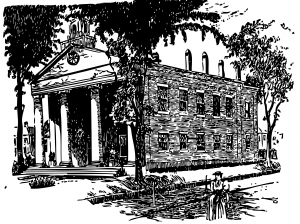
Understanding the value of narrative coherence allows us to ask questions pertaining to the trial testimony of John V. Morse that may be different questions than those based upon a rational paradigmatic approach. This we will see as we consider whether or not Morse’s responses make sense within the Borden narrative. Additionally, the approach of questioning Morse, the framing or asking of a question and the acceptance of an answer may be determined as either from a rational or a narrative framework and can help in this interpretive analysis of Morse’s testimony. Along with narrative coherence, narrative fidelity is essential to a consideration of Morse’s trial testimony.
Narrative Fidelity
Narrative fidelity tells us whether or not someone’s story rings true and consistent to our own experiences. An example of this would be to consider someone’s action or response to a particular situation and compare that reaction to our own potential reaction to a similar situation that we may have experienced. We consider what makes sense to us based upon how we live our lives. Of course narrative fidelity may be different for different people; nevertheless, part of how we evaluate what other people tell us is to compare it to what we know in our lives. By combining this aspect of interpretation with narrative coherence one can come to a reliable decision about a particular event or circumstance.
In the case of John Morse’s testimony, examining narrative fidelity can point to whether or not his testimony is consistent with what we know in our lives or to what we know as truth. This is a tool that is helpful to discern those rhetorical inventions that people often use in their mode of public discourse. Narrative coherence and narrative fidelity can advance the traditional rational paradigmatic approach toward a fuller understanding of a particular communicative event.
Rhetorical Frames
In order to understand something through narrative coherence we ask these questions: “Does this make sense?” “Could this happen this way?” and “Is it likely that this could have occurred?” For coherency, it is important for an answer to follow a question or for the answer to be pertinent to the question. Significant areas of Morse’s testimony seem more to follow the lines of nonsequitorious response, defined as a conclusion that does not follow from the argument, question, or general relevancy, rather than a response that would be considered coherent. Nonsequitors punch holes in stories, and some of Morse’s trial testimony contains these holes.
An example of John Morse’s use of nonsequitor in his trial testimony occurs when the prosecutor asks him what he did when he returned from his morning errands on the day of the murders:
Q. Where did you go then?
A. Went to the house.
Q. When you got to the house were you informed by any one that something had happened there?
A. Yes, sir.
Q. In consequence of that information did you go into the house?
A. I did.
Q. Which one of Mr. and Mrs. Borden did you first see?
A. Saw Miss Lizzie.
Morse is focusing his observation on Lizzie and avoiding the explanation of his first inspection of Andrew and Abby Borden’s dead bodies. Much of Morse’s testimony demonstrates easy, short answers directly related to the questions. However there are a few places within his questioning where he fails to be consistent in his answering. Another place in his testimony where his answers are not appropriate to the line of questioning pertains to biographical data:
Q. By the way, the child of the first marriage who died [referring to Andrew Borden’s biological children with his first wife], was he or she older or younger than the surviving children?
A. She was younger than Lizzie, between the two.
Q. Your answer is somewhat inconsistent.
A. Well, Emma is the oldest, then Alice, her name was next, and then Lizzie.
In this case, Morse’s testimony does not follow in biological sequence. These interruptions are seemingly benign answers that can potentially rupture into red herrings, which are arguments designed to take your attention away from the actual or real argument of a case. John Morse does not create red herrings but his minimal nonsequitor responses create red herrings to which the questioner has to adapt. While some of Morse’s testimony was not fully developed and should have been readdressed through cross-examination or re-direct examination, issues of less importance were advanced, such as Mr. Robinson’s questioning about Andrew Borden’s first wife’s death:
Q. . . . Did you give correctly, do you think, the date of your sister’s death – the year? I mean the first Mrs. Borden?
A. Why, I know that was just the best of my recollection, about that time. It may have been within a year or so of it, I think. I know it was during war times, and I think about the first of it too. It was during the war times.
Q. Yes. Well, now, as you recall it, do you recollect that Miss Lizzie was born in July, 1860?
A. I make it she is about 32 or 33 years old.
Q. Yes, sir. But we are not now speaking of that, but whether you did not put the date of your sister’s death about a year or two too early?
A. Well, I may.
Q. Yes. Miss Lizzie was a little girl two or three years old that time, wasn’t she, at the time your sister died, instead of being about a year?
A. I thought she was about three years old when he married the second time. I have got my mind that way.
Q. Well, you are not certain now, correctly, then; but upon reflection I understand you to day you cannot now positively state the year?
A. No, I cannot.
Q. You may be in error a year or two?
A. Yes.
Interestingly, this line of questioning occurs at the end of Morse’s cross-examination. While it does show potential errors of Morse’s reasoning, it does not aid in the clarification of other questions that are still unanswered, such as:
1. What was Morse’s business in Fall River on that particular visit?
2. What were his current business dealings with Andrew Borden? (These first two questions could have been carefully considered without violating standard hearsay rules).
3. Why did he not bring luggage to the Borden household on this visit?
4. Why did he sleep in the guest room when in the past he slept on the third floor in a room across from Bridget Sullivan’s room?
5. Why did he choose to eat pears from the yard upon his return from his business in town the day of the murders?
Morse arrived at the Borden residence, he says, at 20 minutes to 12, in time for the noon meal. If he knew he was about to have dinner, why would he munch on pears, dawdling in the back yard, before his entrance? Nevertheless, while some questions can never be answered, they should have been asked at the trial in order to make sense out of his testimony or story. These rhetorical glimpses into the forensic testimony help to unfold potential interpretive meaning. Narrative fidelity adds even more potentiality to this task.
Fidelity, Morse, & Sullivan
Truth is a difficult thing to define and determine, especially when factual evidence cannot be used as a guide. There is an important area of questioning in Morse’s testimony that is inconsistent with that of Bridget Sullivan’s testimony. John Morse testifies that he heard a conversation between Bridget and Abby Borden on the morning of the murders:
Q. Did you hear any conversation between Mrs. Borden and Bridget that morning?
A. Spoke to her about washing some windows.
Q. What did she say?
A. Said she would.
Q. That is Bridget said she would?
A. Yes.
Q. Give what Mrs. Borden said to Bridget?
A. I think she said in this way: “Bridget, I want you to wash these windows to-day.”
Q. And about what time was that said?
A. At breakfast time.
Q. While you were seated at the table?
A. Yes, sir.
In fact, Bridget testifies that the window-washing conversation she had with Mrs. Borden occurred after John Morse left the house the morning of the murders. It is clear from the content that both Morse and Sullivan are talking about the same conversation:
Q. After you had completed your breakfast what did you do?
A. I took the dishes off out of the dining-room and brought them out in the kitchen and began to wash them.
Q. Did you complete the washing of the dishes before any one else appeared?
A. No, sir.
Q. Who next appeared?
A. The next I remember to see was Mr. Borden and Mr. Morse going out the back entry – the back door.
Q. Did Mr. Morse return after the two went out to the screen door?
A. No, sir; he went out.
Q. Did Mr. Borden return at that time?
A. Yes, sir.
. . . . . . . . . .
Q. You will have to speak a little louder?
A. Mrs. Borden was in the dining-room as I was fixing my dining-room table, and she asked me if I had anything to do this morning. I said, No, not particular, if she had anything to do for me. She said she wanted the windows washed. I asked her how, and she said inside and outside both, they are awful dirty.
Q. What was she doing when you had that talk with her in the dining-room?
A. She was dusting. She had a feather duster in her hand. She was dusting between the sitting-room and dining-room, the door.
Apparently, according to Bridget Sullivan’s testimony, it was shortly after she cleaned the breakfast dishes that John Morse left for the morning, an event that occurred before the Abby conversation. John Morse testified that he heard the conversation, and he related the specifics, but he claimed it occurred during breakfast. It seems as though Morse did hear this conversation because he relates similar content of the conversation as Bridget. From the perspective of narrative fidelity, the conflicting claims of this argument suggest that there is a question of truth to these statements. We know that someone is not being truthful because the answer cannot be both ways.
The only two people who can confirm or deny the truthfulness of either of these statements were killed. We may not be able to determine which statement is absolutely truthful to the facts but we can safely state that someone is not being truthful. Therefore, narrative fidelity cannot be achieved through these two people’s stories. While we can look at the overarching coherency of Bridget Sullivan’s testimony and compare it to the overarching coherency of Morse’s testimony and determine who is likely to be telling the truth, without corroboration of the facts, narrative fidelity can never be truly attained, thus making it difficult to come to an accurate understanding of the situation. How do we, then, successfully interpret within the given historical moment of the trial of Lizzie Borden? We have to consider the implications of Morse’s testimony and continue to compare it to Bridget Sullivan’s testimony, point by point, so that we can at least determine, through good reasons, which witness is more likely to be accurate overall.
Fidelity, Morse, & the Testimony of Others
There is another important area in the questioning of Morse that is inconsistent with the testimony of others. John Morse testifies that he left his relatives on Weybosset Street at 20 minutes past 11 and immediately took a horse car to the corner of Pleasant and Second Street, then walked directly to the Borden house, arriving at 20 minutes to 12. He is asked about his arrival:
Q. When you got to the Borden house did anything attract your attention at first?
A. No, sir.
Q. Where did you first go?
A. Went into the back door, round the rear part of the house, to a pear tree.
Q. Did you do anything out there?
A. Picked up two or three pears.
Q. Did you begin to eat them or not?
A. I ate part of one of them.
Q. Where did you go then?
A. Went to the house.
Police Officer George Allen, however, testifies that he arrived at the murder scene for the second time at half past 11, but no later than 25 minutes to 12, and saw several people gathered outside in the road. That Morse could walk past the side door that was being guarded by Charles Sawyer, eat a pear in the back yard (before dinner) and not see or hear anyone or anything unusual confounds us.
There is yet another area of conflicting testimony, this time during the preliminary hearing. Patrick Doherty, upon first visiting the guest room where Mrs. Borden’s body lay, had moved the bed “away from her head” to make the space wider. He then went to telephone the station, and when he returned spoke to Bridget a few minutes in the kitchen. He then went upstairs, returning to the guest room, and implies Dr. Dolan was also in the room. In his Preliminary Hearing testimony Doherty states:
I saw Mr. Morse in the room when I got back from the telephone, when I was looking at Mrs. Borden’s body. He stood in the room with his hand on the foot of the bed.
Morse, on the other hand, testifies thusly at the preliminary:
Q. You went up the front stairs, did you go up into the room?
A. No sir.
Q. How far did you go?
A. Probably two-thirds of the way up, so I could look under the bed.
Q. What do you mean by “look under the bed”?
A. When I got up high enough, I could look through the space under the bed, and saw Mrs. Borden laying there between the bed and the bureau.
Q. Did you know she was up in that room?
A. They told me so.
One could assume, based on narrative fidelity, that Morse would have remembered the experience of closely observing the gruesome remains of his brother-in-law’s wife and that this would be something he would retain in his mind’s eye and could recall later. Oddly, Morse chooses not to place himself near her body for some inexplicable and unknowable reason.
Implications of Morse’s Testimony
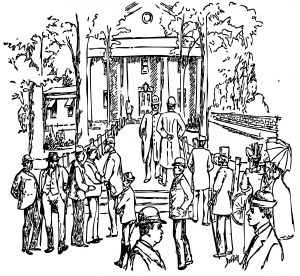
The trial testimony transcripts of the Lizzie Borden case can easily be obtained and read by any person who downloads them from LizzieAndrewBorden.com. The difficult part follows in the interpretation of witness testimony. We have to be careful not to prejudge the testimonies by our contemporary standards of judgment. Through Court TV and other forms of media, the legal process of criminal trials has become familiar to most people in the Western World. Without withholding my contemporary prejudices, I might be inclined to reduce my interpretation of this case to flawed police inquiries, a flawed criminal investigation, poor use of forensic science, and other setbacks that the television series Cold Case Files might chose to investigate.
When we argue a point in the past from the position in the present we may fall prey to prejudices that will close down the inquiry. Looking at Morse’s testimony through universal frames of inquiry, such as classical rhetorical theory and contemporary communication theory, we work within the guidelines of historicity, which can keep the horizon of our inquiry in sight, inviting new ways of seeing old things.
Conclusion
Leonard Rebello’s Lizzie Borden Past and Present is a comprehensive, well-documented reference for the Borden murders and the period in which they occurred. The purpose for a comprehensive text of this magnitude is to provide a hermeneutic entrance into the nuances involved in a case of such social, political, and cultural magnitude. We hope that by closely studying the case of the Borden murders we can learn something about the past and apply it to our understanding of the present. While there are many methods for studying historical events, there are also flaws to our process. Therefore, considering alternative methods in interpreting experiences can shed some much needed new light on preexisting circumstances.
This essay has examined episodes in the trial testimony of John V. Morse allowing historicity to be our interpretive beacon to help us to see communicative exchanges in alternative ways. It can be used as a guide for further reflection upon our potential acceptance of narratives involved in the Borden inquiry. This approach reminds us to be cautious in our examinations of historical texts, while being aware that logic or rational approaches to interpretation can sometimes be limiting. Narrative rationality can offer our interpretive encounters a richer outcome. Future scholarship in Borden studies might consider using historicity and narrative to reconsider other aspects of this most interesting and perplexing case.
1 “Forensic” in this case does not connote the contemporary meaning of physical evidence. Rather, the term “forensic” here is used in its rhetorical sense of the use of language and words in public oratory. Aristotle argued reserved forensic oratory as the type of speaking that attacks or defends a person. Cicero equated forensic oratory with judicial speaking that occurs in a court of law that involves accusation and defense or a claim and a counter plea of sorts.
Works Cited
Arnett, R.C., Arneson, P. Dialogic Civility in a Cynical Age: Community, Hope, and Interpersonal Relationships. NY: SUNY Press 1999.
Cicero, M. T. De Inventione. Great Britain: St. Edmundsbury Press, Ltd, 2000.
Fisher, W. R. Human Communication as Narration: Toward a Philosophy of Reason, Value, and Action. Columbia, SC: University of South Carolina Press, 1989.
Gadamer, H.G. Truth and Method. NY: Continuum, 2002.
Rebello, Leonard. Lizzie Borden Past and Present. Fall River, MA: Al-Zach Press, 1999.
Ricoeur, P. Time and Narrative. vol. 3. Chicago, IL: University Press of Chicago, 1984.


